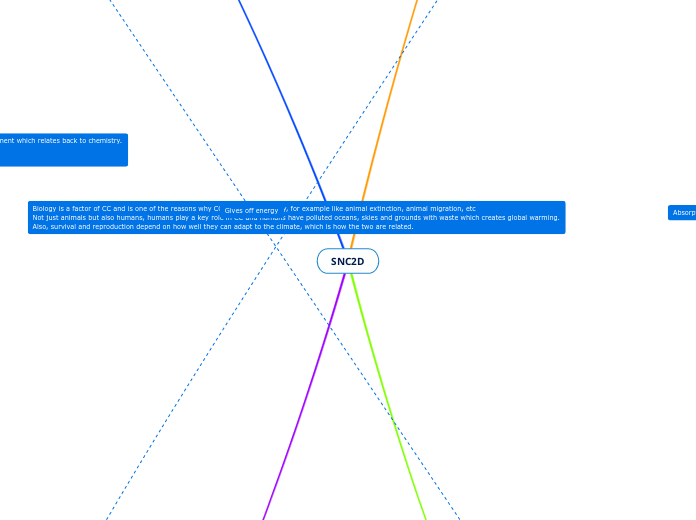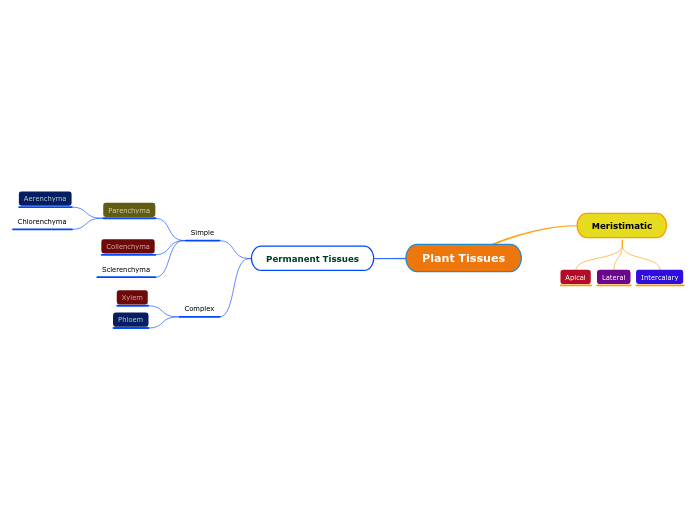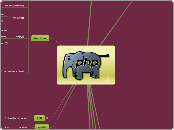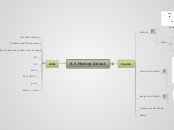SNC2D
Biology
Animal and plant tissues
Plant tissues
----
Meristematic
Epidermal
Ground
Vascular
Meristematic - Formation of new organs
Epidermal - Provides a protective barrier
Ground - Sto0res food and water
Vascular - Transport pathways for water, nutrients, etc.
Animal tissues
----
Epithelial
Connective
Muscle
Nervous
Epithelial - Absorb substances
Connective - Provide support
Muscle - Controls movement
Nervous - Processing information form externally and internally and then triggers a response
Cell Division - PMAT
Prophase, Metaphase, Anaphase, Telophase
Prophase - The first stage of cell division
Metaphase - The second stage of cell division
Anaphase - The third stage of cell division, cells pull away
Telophase - The last stage of cell division
Cell theory
All plants and animal cells are composted up of cells and the cell is the most basic unit of life.
Animal cells
Cell Membrane
Lysosome
Nucleus
Nucleolus
Nuclear Membrane
Vacuole
Mitochondrion
Cytoplasm
Rough ER
Smooth ER
Ribosomes
Golgi apparatus
Cell membrane - Regulates the transport of materials entering and exiting the cell.
Lysosome - Containing digestive enzymes where digestion of cell nutrients take place.
Nucleus - Controls many of the functions of the cell.
Nucleolus - An organelle within the nucleus where ribosomes are produced
Nuclear Membrane - Membrane that surrounds the nucleus
Vacuole - Fills with food being digested and waste material that is on its way out of the cell.
Mitochondrion - Converts energy stored in glucose into ATP
Cytoplasm - Jelly like material outside the cell nucleus in which the organelles are located.
Rough ER - Transport materials through the cell and produces proteins
Smooth ER - Transports materials through the cell, it contains enzymes and produces and digests lipids and membrane proteins.
Ribosomes - Small organelles found throughout the cell
Golgi apparatus - Packages proteins and carbohydrates.
Plant cells
Cell wall
Cell Membrane
Vacuole
Nucleus
Nucleolus
Nuclear Membrane
Chloroplast
Mitochondrion
Cytoplasm
Rough ER (Endoplasmic reticulum)
Smooth ER
Ribosomes
Golgi Apparatus
Cell wall - A thick membrane that surrounds the plant cell and gives sup0port and structure.
Cell membrane - Regulates the transport of materials entering and exiting the cell.
Vacuole - A large membrane-bound space within a plant cell that is filled with fluid. Helps maintain the shape of the cell.
Nucleus - Controls many of the functions of the cell.
Nucleolus - An organelle within the nucleus where ribosomes are produced
Nuclear Membrane - Membrane that surrounds the nucleus
Chloroplast - Contains cholorophyll and where photosynthesis takes place
Mitochondrion - Converts energy stored in glucose into ATP
Cytoplasm - Jelly like material outside the cell nucleus in which the organelles are located.
Rough ER - Transport materials through the cell and produces proteins
Smooth ER - Transports materials through the cell, it contains enzymes and produces and digests lipids and membrane proteins.
Ribosomes - Small organelles found throughout the cell
Golgi apparatus - Packages proteins and carbohydrates.
Chemistry
Periodic Table of Elements
Chemical reactions
Types of Reactions
Synthesis, Decomposition, Single Displacement, Double Displacement
Double displacement - When two elements is substituted for another in a compound
Single displacement - When one element is substituted for another element in a compound
Decomposition - When elements breakdown (decompose)
Synthesis - When 2 elements become one compound
Balancing chemical equations
Word Equation
Skeleton/formula equation
Balanced chemical equation
Equations
Reactants --> Products (the arrow means "reacts to produce"
Nomenclature for Compounds
Compounds are pure substances
With two or more atoms combined to create a larger molecule that has certain properties
There are 2 types of compounds, ionic and molecular.
Molecular Compounds properties are soft, dissolve in water but don't conduct electricity and have low melting points
Made from a Non-Metal and Non-Metal
Electrons are shared between the elements
Covalent (molecular) bond between elements (attract due to sharing electrons)
Uses prefixes when naming (mono, di, tri, etc.)
Ionic Compound properties have a crystal form, hard, brittle solids, when dissolved, can conduct electricity due to the ions,
They are made of a metal + non-metal (Cation + Anion).
Electrons are given and taken by the metal and non-metal.
Ionic Bond between elements (attract due to + and - charges)
Balance charges to create the compound.
Recall:
Compounds (Carbon Dioxide CO2)
Molelcules (Oxygen -O2)
Atoms (Oxygen atom)
Lewis Dot Diagrams
Only shows the electrons in the valence shell
Atoms vs Ions
Bohr-Rutherford
2 electrons fill the first shell and then 8 fill any other shell in the diagram.
Light and Optics
Chem -
Mirrors
SALT
S = Size
A = Attitude
L = Location
T = Type
Size - Is the image smaller, bigger or the same size as the object.
Attitude - Is the image upright or inverted compared to the object.
Location - Where is the image located? In front of or behind the mirror
Type - Is it a virtual or a real image?
Convex
Example: Car side mirrors, fish eye lense, hallway safety mirrors
Concave
Mirrors that go inward
Example: binoculars, telescopes
Plane Mirrors
Example: The average mirror in a bathroom
Sheep Eye Diagram & Terms:
Retina
Cornea
Pupil
Aqueous Humor
Iris
Lens
Vitreous Humor
Sclera
Tapetum
Optic Nerve
Blind Spot
Blind Spot - The place where all nerves from the retina join to form the optic nerve. Each eye has a blind spot where there are no light-sensitive cells.
Optic Nerve - The bundle of nerve fibres that carry information from the retina to the brain.
Tapetum - The colorful, shiny material located behind the retina. it's in animals with good night vision, the tapetum reflects light back through the retina.
Example: Cats eyes shine when looking at them.
Sclera - A thick, tough, white outer covering of the eyeball.
Vitreous Humor - A thick, clear jelly that helps give the eyeball it's shape.
Lens - A clear, flexible structule that makes an image on the eye's retina. The lens is flexible so that it can change it's shape and focuses on objects that are close up and objects far away.
Iris - A muscle the controls how much light enters the eye. It is suspended between the cornea and the lens. A cow's iris is brown. Human irises come in many colors including brown, blue, green, and gray.
Aqueous Humor - A clear fluid that helps the cornea keep it's rounded shape
Pupil - The dark circle in the center of the iris, it's a hole that lets light into the inner eye. The pupil is round and a cow's pupil is oval.
Cornea - A tough, clear covering over the iris and the pupil that helps protect the eye. Light bends as it passes through the cornea. The cornea begins bending light to make an image; the lens finishes the job.
Retina - The layer of light-sensitive cells at the back of the eye, detects images from the cornea and the lens. it is connected to the brain by the optic nerve.
The retina is located at the back of the eye
Terms:
Electromagnetic spectrum, wavelength, frequency, amplitude, light waves
Climate Change
The emission of certain substances to the atmosphere produces a greenhouse effect contributing to the global warming
Actions towards CC
Bike lanes
Mitigation and Adaptation
Adaptation - Taking action to prepare for and adjust to both the current effects of climate change the predicted impacts in the future.
Mitigation - Making the impacts of climate change less severe by preventing or reducing the emission of greenhouse gases (GHG) into the atmosphere.
Effects of CC
Poverty and displcaement
More health risks
Not enough food
Loss of species
A warming and rising ocean
Increased drought
Severe storms
Warmer temperatures
Global warming
Travel 4 Climate
Science behind CC (Carbon Combustion)
Natural causes of CC
Changes in the sun, orbital variation, solar variability, volcanic activity, tectonic activity
Subtopic









